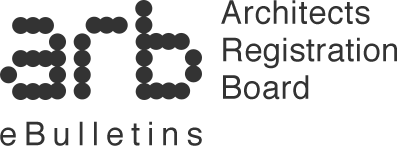
The waves of protest across the world this year, demanding racial equality, remind us of our own responsibilities not only to tackle discrimination wherever we find it, but to encourage a culture that promotes inclusion – welcoming and celebrating diversity for the good of the profession and society generally.
The very least the public can expect of the profession is for everyone to be treated fairly and with respect. When any individual architect falls below those standards, the regulator’s duty is to act robustly to protect the hard-won reputation of the profession as a whole. Earlier this year an architect was erased from the Register by ARB’s Professional Conduct Committee for a series of wholly unacceptable postings on the internet.
Most architects would not even dream of thinking such things, never mind posting them in public. But this is a reminder of the risks that using social media pose. To better support you, we have produced new advice on handling social media as a regulated – and respected – professional. This is featured in the ‘Dear Architect’ section of this eBulletin.
Of course our commitment to promoting equality, diversity and inclusion must go beyond disciplining the very few architects who fail to act appropriately. Our statistics demonstrate that the profession is less than representative of the communities it serves, particularly in respect of ethnicity. We want to play our part in finding solutions to under-representation. This starts with having a good understanding of what the profession looks like today. If you haven’t done so already, please now provide us with your own E&D data. You can do so here.
When the Board met last week, we agreed a new strategic direction in respect of Equality, Diversity and Inclusion. At its heart is an acceptance that, like society in general, we are on a journey of improvement, and we will get better only by genuinely listening to people about their lived experiences. We want to better understand the obstacles some architects face in accessing the profession and progressing within it.
None of us can forget the events in the early morning of 14 June 2017, when the Grenfell Tower fire caused us all to change the way we view our relationship with buildings – from places of safe harbour, to constructions we must be protected from. The aftermath of the appalling tragedy triggered an exercise of introspection from all those connected with the built environment. It is now universally accepted that there must be a greater focus on the safety of those who will live and work in buildings.
Part of that process has been a re-examination of the guidance that is there to ensure buildings are designed, constructed and managed safely. And at the heart of that exercise has been a commitment to ensure that everyone connected with construction is competent – in skills and knowledge, but above all in attitude – to do so.
This is why I am pleased to see the publication of the industry’s report – Setting the Bar – a collaborative effort across the full range of those working in the building industry aimed at raising standards across the board. We at ARB continue to work with government and our key stakeholders to ensure that architects are at the forefront of reforms. By the end of this year we will issue guidance specifying how architects should raise and maintain their own levels of competence in relation to fire and life-safety design issues. The challenge is there. Society deserves no less.
Alan Kershaw
Acting Chair, Architects Registration Board


